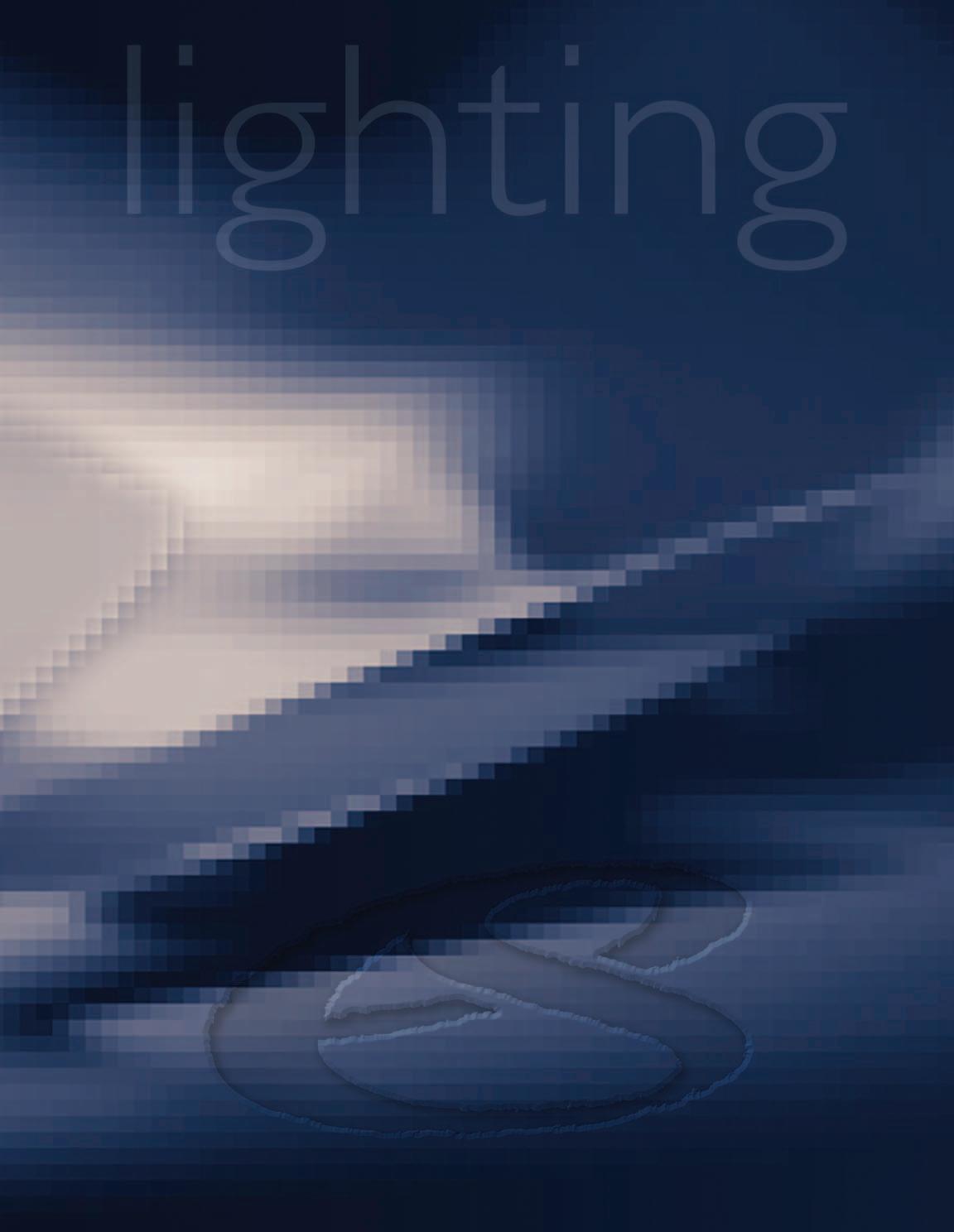
4 minute read
On location
Studio lights should not be limited to the studio. They can be used on location in conjunction with ambient and existing daylight. With color correction of the light source and/or camera most light sources can produce acceptable and interesting results. Raw file images can be color corrected in post-production. See ‘Characteristics of Light’.
Exterior location
Advertisement
Common examples of studio lighting used on location are the images seen in film and television. The same approach can be taken to still images. Artificial light, whether flash or tungsten, is normally used to supplement the existing light present, usually daylight. In this situation correct color is achieved by balancing the camera to daylight (5500K) and filtering the tungsten light source/sources (3200K) with an 80A lighting gel. When using studio flash on location no filtration is required as the color temperature of the flash is equal to average daylight (5500K).
Mixed light Mixing the color temperature of the light sources can give a more ‘natural’ look. Despite the fact the human eye corrects all light sources to what appears to be white light, it is visually accepted, and in most cases to great effect, that when we view images created using mixed light sources there should be a difference between the color temperature of the various sources of light within the frame.
Balanced daylight and flash - Tracey Hayes
There can be many different light sources with varying color temperatures confronting the photographer on location. This can range from industrial lighting to the glow from a TV. The possibilities and variations are many but the problems they pose can be either corrected with filtration or white balance adjustment to render ‘correct’ color, or ignored and the differences in color temperature exploited and used to effect.
Daylight balance In an exterior location all light sources are balanced to the predominance of daylight (5500K). With an interior location (for example, a furnished room with large windows) there can be a mixture of various light sources. Balancing to daylight (5500K) without filtration of the tungsten light sources (3200K) would make the image appear quite different. Daylight in the image would appear ‘correct’ but any tungsten light source whether artificially introduced (studio) or practical (normal domestic lighting, desk lamps, candles, etc.) would create a warm glow at its source and on subject matter predominantly lit by it. The overall effect would be of white light through the windows, and depending upon the lighting ratio created between the tungsten light and the ambient daylight, an overall warm cast to the image.
Tungsten balance If the camera is balanced to tungsten (3200K) without filtration of either the daylight (5500K) or the tungsten light sources (3200K) the result would appear different again. Daylight in the image would appear to have a blue cast and any tungsten light source would appear ‘correct’. The overall effect would be of blue light through the windows, and depending upon the lighting ratio created between the tungsten light and the ambient daylight, a balance of ‘correct’ color within the room. It should be remembered filtration of the camera to match the dominant light source would also produce similar results. However, filtration of the camera removes the possibility of selectively filtering the various light sources and color temperatures available to the photographer to create an interesting mix of colors within the frame. For more examples of lighting on location see Essential Skills: Studio Photography.

Domestic tungsten light and daylight - James Newman
A designer commissions a photograph of a kitchen. As it is in a residential building the owner has requested the minimum amount of disturbance. The client has requested the lighting enhances the space and balances ambient interior and exterior daylight. The photographer decides upon one exposure, balancing the exterior, interior and introduced lighting. The camera is balanced to daylight. Exterior daylight will be overexposed to reduce the orange/red color cast of domestic tungsten lighting.

Ambient light - daylight and tungsten - incident - 1 sec. @ f8.5
Umbrella flash in hallway balanced to f8.5
Fill flash off ceiling balanced to f8 - John Hay


James Newman



Chris Mollison


Nigel Carboon

creative techniques



Daniel Tückmantel


essential skills
~ Develop knowledge and understanding of how light can change the character and mood of subject matter. ~ Develop skills in controlling lighting to achieve creative effect. ~ Observe the use of creative techniques in the production of photographic images. ~ Study an extensive collection of images utilizing creative lighting techniques. ~ Produce photographic images demonstrating a practical understanding of creative lighting techniques.










